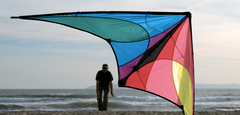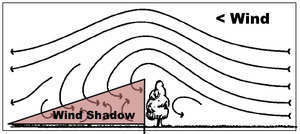Wind Ranges for Kites - What to think!
I remember as a kid trying to fly kites that you had to run like mad just to keep them aloft. It made for a very frustrating experience. One exception from my childhood was a delta shaped black plastic kite - the one that you affixed adhesive eyes too. These fiery eyes made it look pretty cool, and you know, it flew pretty well! As fun as that kite was, being made of plastic it didn't last very long!When we started the Great Canadian Kite Company (read our story here) we wanted to make sure that we sold a quality product that flew well and was built to be durable by quality kite standards. As such, the kites we have chosen are from reputable manufacturers with proven designs that fly in the stated conditions.
But even then... what does a wind range really mean? A wind range is provided to communicate the range of wind speed that the kite will fly in. So a range of 10 - 40 kph means that the kite is capable of flying in winds as low as 10 Kph to an upper limit of 40 kph.
The upper range can be a little more flexible if just flying the kite is the priority. When kites fly in winds above the range, they will often become much faster, harder to control, pull too hard and become difficult to trick. Too much wind will rip stitches and fabric, or break framing and line. It also can increase the potential for damage with hard crashes.
In higher winds you can add wind brakes or add tails, and this will often raise the upper limit.
 Sometimes, especially with stunt kites (low wind or Indoor) you see a lower wind range of zero or 5 or 8 or 10 kph. Low wind kite flying is an art as much as it is a science, and many manufacturers when establishing the lower end of the wind range have folks testing it who are really good pilots!
Sometimes, especially with stunt kites (low wind or Indoor) you see a lower wind range of zero or 5 or 8 or 10 kph. Low wind kite flying is an art as much as it is a science, and many manufacturers when establishing the lower end of the wind range have folks testing it who are really good pilots!So can the kites fly at those low ranges? You bet! Can anybody fly them in the low range - with some practice you can learn to keep your kite aloft at the lowest wind ranges.
As kite professionals, we are here to offer you experienced recommendation on the kinds of kites and kite accessories that will get you in the air with the goal of providing the best kite flying experience we can!
Great Canadian Kite Company also have some Resources for the Kite Flyer:




